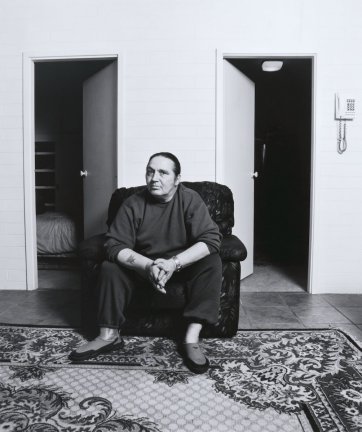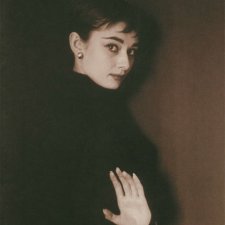Watching Stevie Wright perform his 1970s classic hit song Evie in the Long Way to the Top concert of 2002 was a remarkably moving experience for me. Stevie was clearly struggling physically, remaining seated throughout the whole performance. It was a poignant contrast to his rambunctious young days.
My interest was rekindled in the man who had once been a pivotal part of Australian rock culture - the lead singer of the highly regarded sixties group, The Easybeats. When I was a teenager, the songs Sorry and Friday on My Mindthat Stevie sang with the group were guaranteed to have me singing along at top volume.
While witnessing Stevie's courageous performance at Long Way To The Top - where he was, in essence, the soul of the show, with all the other artists joining him on stage for the finale - I decided that I would dearly love to do a photographic portrait of him. After much detective work I discovered that he lived on the NSWSouth Coastand I was eventually put in touch with his partner, and carer, Fay Walker. She proved to be a wonderful go-between, enabling a time to be set up for me to visit, and photograph, Stevie.
On the appointed day, I was warmly greeted by Fay and Stevie who was extremely welcoming in spite of his obviously delicate health. During the course of the day I learned that Stevie has suffered from Korsakoff's psychosis (short-term memory loss and major confusion) as a result of excesses of alcohol and drugs. He had also been committed to the notorious Chelmsford Hospital for deep sleep therapy. As if all this wasn't enough, a broken ankle had resulted in a Golden Staph infection, which has permanently affected his mobility.
Before we began the portrait session, Stevie, with the help of the ever-attentive Fay, showed me his stage wardrobe: leather pants, leather jacket and boots. His idea was to dress up for the portrait. While this would have added a theatrical element, I sensed that this portrait should go some way toward hinting at the circumstances of Stevie Wright's life. I wanted to produce an image which was documentary in nature rather than slick, glitzy and lacking truthfulness. I explained this to Stevie and he readily agreed. I have always enjoyed the way in which environmental portraiture allows one to use a location as part of the storytelling symbolism within the image. As I photographed Stevie, the two partly open doors leading off into darkened rooms seemed to suggest what he had endured since the halcyon days of the Easybeats. It was gratifying to meet someone with his background who was so comfortable in his skin that he was prepared to show the world just how he was without any artifice.
Stevie proved to be very much at ease in front of the camera, but I very much needed to pace the flow of the photography session to his energy and concentration levels. Because of his ill health we had to break frequently to allow him to regroup. When doing a portrait session, I like to produce Polaroids regularly as they are useful in checking the technical side of the photographic process. Stevie was particularly interested in the Polaroids and studied each one intently, often commenting with salient points about the direction I was pursuing.
Around the ebb and flow of the photo session he happily reminisced about his rock 'n' roll days. Stevie appeared not unduly concerned that he and The Easybeats had never been truly acknowledged for their part in laying the blueprint for the international success of so many other Australian rock music acts. At the time of writing this article in July 2005, I was pleased to learn that at long last Stevie Wright has been recognised for his important part in Australian Rock history through his induction into the Australian Record Industry Association's (ARIA) Hall Of Fame.
I left Stevie and Fay's company with a very real sense of expectancy at seeing the results from the session. When I saw the proof-sheets and work prints my hopes were realized. Memories from over 35 years ago of 'Little Stevie' - lead singer of The Easybeats and teenage rebel - were now supplanted by strong images of the resilient survivor that that teenager had become.















